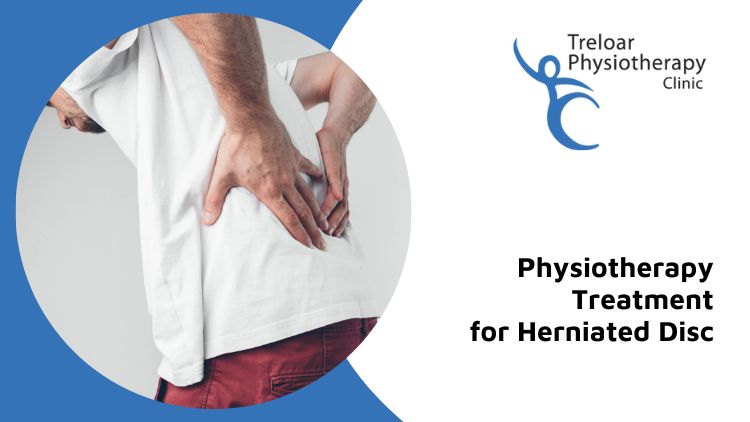What To Expect With Physiotherapy If You Experience A Herniated Disc
Herniated discs are a common injury that can happen to anybody. They take place when the soft, gel-like center of a spinal disc pushes through a weak spot in the external circle of cartilage, forming a herniation. But what exactly is a herniated disc? And why does it take place?
Disc herniations are more typical as we grow older due to the fact that our discs lose liquidity as we grow older. They can likewise be set off by sudden movements such as throwing or raising heavy things, twisting rapidly or hyperextending your back.
If you’ve been experiencing chronic or short-term pain and are stressed that you might have a herniated disc, this brief article will help you understand what to anticipate from physiotherapy for a herniated disc and how this non-surgical treatment can help minimize your pain and enhance your quality of life.
What Symptoms to Expect From a Herniated Disc?
If you are experiencing any of the following signs, it is very important to visit your doctor to eliminate any other causes:
- Discomfort that shoots down your leg or in your back/legs (This pain is usually worse when you’re moving and is typically referred to as a feeling of “pins and needles”.)
- Tingling, feeling numb or weakness in the legs
- A sensation of heaviness or tightness in your back
- Muscle spasms
- Shortness of breath
- Neck pain
- Spontaneous pain in the back or legs
Your health care provider can assess your problem and validate whether or not you actually have a disc herniation. Your doctor might prescribe an MRI or CT scan to get a better look inside your spine and verify the medical diagnosis. The good news is that even if you have a herniated disc, you don’t necessarily have to worry about invasive surgery for pain relief.
The Physiotherapy Procedure for a Herniated Disc
A physical therapist will start by collecting information about your symptoms and performing a thorough assessment of your spinal column and surrounding muscle tissues.
These factors can play a major role in how your condition is treated. They’ll also ask about your general wellbeing, your pain level, any other disc symptoms you might be suffering from, about any regular exercise you may do and about your lifestyle.
Although the exact process will vary depending on the severity of your condition, most herniated discs will need a combination of stretching and strengthening workouts. Physiotherapy treatment sessions are usually one or two times a week and take around 45-60 min each session.
How Does Physio Assist With a Herniated Disc?
Physiotherapy can help relieve your pain and speed up your recovery by integrating both hands-on treatment and exercise treatment. A hands-on therapy treatment will focus on your pain and include methods such as joint movement or spinal adjustment.
A workout therapy treatment will focus on strengthening your muscle tissues, enhancing your posture, and minimizing your discomfort and impairment.
Depending on your health condition, your physiotherapist might recommend one or a combo of the following treatments:
- Muscle-strengthening exercises. These movements help strengthen your core, back and leg muscles and enhance your posture. They will also help you to steer clear of extreme lifting and twisting.
- Core stabilizing and breathing exercises. These exercises support your core muscles during day-to-day activities and bolster your back, abdomen and pelvic muscles.
- Postural braces. A physiotherapist may suggest a brace to help support your back and lessen your pain.
- Specifically-targeted workouts. These are movements that are designed to help you enhance your health condition. They will be customized to your condition and might include conditioning, stretching or both.
Strengthening Workouts
Workouts to build up the muscles around your spine and lower back are an important part of physiotherapy for a herniated disc. They can help to improve your posture and decrease your pain. Your physiotherapist should provide custom strengthening exercises for your special needs.
A few other typical building up workouts are:
- Swimming: Swimming is an exceptional low-impact exercise that is low-risk for people with pain in the back. Swimming can enhance your flexibility and range of motion while providing a low-impact cardiovascular exercise.
- Pilates: Pilates is a workout system that concentrates on increasing mobility and strength in the core muscles. It’s an excellent exercise to enhance posture and reduce low back pain.
- Yoga: Yoga is another exceptional low-impact exercise that may be incredibly useful for individuals with back pain. It can improve mobility and lessen pain and stiffness in your back.
Stretching Exercises
Stretching is a vital part of physiotherapy for a herniated disc and helps to reduce your discomfort and enhance your flexibleness too. A few of the most helpful stretching exercises your physiotherapist might recommend are:
Sitting Stretch: Rest on the floor with both legs extended in front of you. Bend your right knee and place your right foot on the floor surface with your knee bent at 90 degrees.
Put your left hand on the flooring a little bit behind your left hip for support. Twist your torso to the right and position your left hand on the floor surface behind your right leg. Hold this posture for ten seconds and then switch sides.
Standing Stretch: Stand with your feet shoulder-width separated. Bend your knees and hips towards your torso to lower yourself into a squatting position. Hold this position for 10 seconds, stand back up and after that bend your torso towards the left to stretch your right side. Hold this position for 10 seconds and then flex your torso to the right to stretch your left side.
Wall Stretch: Stand with your back together with a wall and both legs extended out in front of you. Angle your knees and position your hands behind your head. Push your hips towards the wall and gradually flex your knees toward the floor surface till you sense a stretch in your lower back. Keep this position for ten seconds and after that stand back up.
Final Thoughts
Physiotherapy can be a beneficial treatment option for herniated discs. A mixture of manual therapy and exercise treatment can help reduce your discomfort and speed up your healing.
Depending on your disorder, your physiotherapist may advise one or a mixture of the following treatments: muscle strengthening exercises, core stabilization and breathing exercises, postural braces, and specifically-targeted workouts.
Contact Treloar Physiotherapy Clinic soon and we can start relieving your herniated disc pain. Now scheduling new clients!



